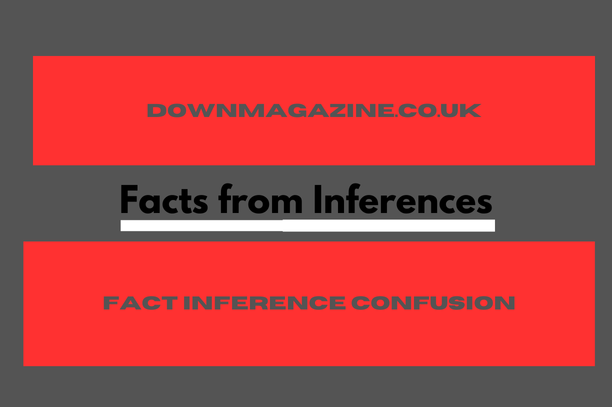Introduction to Fact Inference Confusion
Fact inference confusion is a prevalent issue in both professional and everyday contexts. This confusion arises when individuals mistake inferences—conclusions drawn from evidence—for established facts. Understanding this distinction is essential for clear communication, sound decision-making, and accurate reasoning.
This article explores the nuances of fact inference confusion, its causes, and effective strategies for avoiding it.
What Is Fact Inference Confusion?
Defining Facts
Facts are objective truths that can be verified or proven through evidence. They remain consistent regardless of personal beliefs or interpretations.
Understanding Inferences
Inferences are conclusions drawn from facts or evidence. They involve subjective reasoning and may vary between individuals.
The Confusion Explained
Fact inference confusion occurs when people present inferences as facts or fail to distinguish between the two. This can lead to misunderstandings, flawed arguments, and misinformation.
Common Causes of Fact Inference Confusion
Lack of Critical Thinking
Failing to evaluate evidence critically can blur the line between facts and inferences.
Cognitive Biases
Personal biases can influence how individuals interpret evidence, leading them to treat subjective conclusions as facts.
Ambiguity in Communication
Poorly communicated ideas or unclear language can contribute to the misinterpretation of facts and inferences.
Examples of Fact Inference Confusion
Misinterpreted Data
A news report stating, “Crime rates have increased in the city,” is a fact if supported by data. Concluding that the increase is due to a specific policy without evidence is an inference.
Everyday Conversations
Statements like, “She didn’t respond to my message, so she must be upset,” illustrate inference presented as fact.
The Impact of Fact Inference Confusion
Misinformation Spread
Confusion between facts and inferences can lead to the spread of misinformation, especially on social media.
Poor Decision-Making
Decisions based on incorrect assumptions or inferences can result in ineffective or harmful outcomes.
Damaged Credibility
Presenting inferences as facts can undermine trust and credibility in both personal and professional settings.
Strategies to Avoid Fact Inference Confusion
Distinguish Between Evidence and Interpretation
Always identify the evidence supporting a claim and separate it from personal conclusions.
Practice Active Listening
When engaging in discussions, focus on understanding the speaker’s intent and clarify ambiguities.
Encourage Critical Thinking
Question assumptions, seek additional evidence, and avoid jumping to conclusions.
Use Clear Language
Communicate ideas precisely and differentiate between statements of fact and opinion.
How to Apply These Strategies in Different Contexts
Workplace
- Ensure that reports and presentations clearly distinguish between data (facts) and analyses (inferences).
- Foster a culture of open discussion where assumptions are openly challenged.
Education
- Teach students the difference between facts and inferences through real-world examples.
- Encourage debate and critical analysis of information sources.
Personal Relationships
- Clarify intentions and avoid assuming others’ feelings or motives without confirmation.
Conclusion
Fact inference confusion can significantly impact communication, decision-making, and relationships. By understanding the difference between facts and inferences and applying critical thinking strategies, individuals can minimize misunderstandings and foster clearer, more effective interactions. Whether in professional settings or personal life, mastering this skill is invaluable for navigating complex information landscapes.
FAQs
What is the main difference between a fact and an inference?
A fact is an objective truth supported by evidence, while an inference is a subjective conclusion drawn from facts.
How can I avoid confusing facts with inferences?
You can avoid confusion by critically evaluating evidence, using clear language, and questioning assumptions.
Why is fact inference confusion important to address?
Addressing this confusion is crucial for preventing misinformation, improving decision-making, and maintaining credibility.
Can fact inference confusions occur in scientific research?
Yes, it can occur when hypotheses or interpretations are presented as proven facts without sufficient evidence.
How does critical thinking help in avoiding fact inference confusions?
Critical thinking encourages the evaluation of evidence, questioning of assumptions, and differentiation between facts and interpretations.
